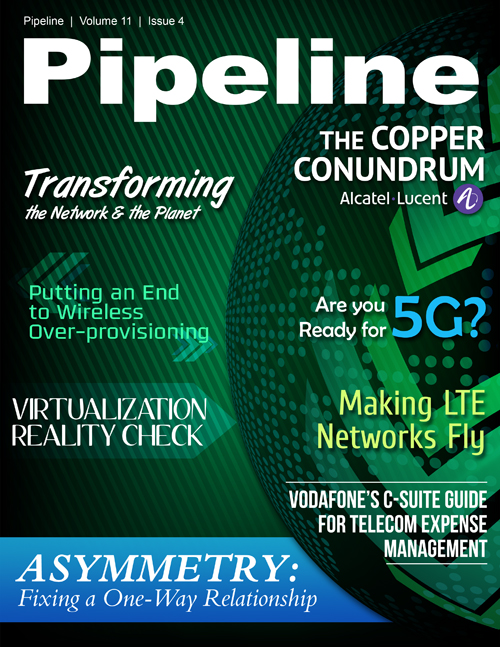Intelligent RF Routing and RAN Virtualization Puts an End to Wireless Over-Provisioning
Operators still remain cautious about this relatively nascent technology. They are particularly concerned about the ROI on such a major shift in platform because at this time, C-RAN is merely a concept. Operators naturally wonder if the perceived cost reduction and revenue growth advantages will pay off. Initial C-RAN implementations are expected to be deployed in commercial networks by 2016 at the earliest. However, operators need to address the expected growth in mobile traffic volume –today.
Network operators require a flexible, scalable, and more intelligent architecture to efficiently and effectively manage networks while maximizing OPEX and CAPEX savings and usable resources.
Maximizing useable resources through RAN virtualization
By contrast, RAN virtualization is a more comprehensive method when compared to C-RAN and should be a strong consideration for operators looking for efficient solutions for the capacity crunch. The scalability and flexibility of a virtualized RAN already delivers substantial capacity and efficiency gains today and will be even more effective when combined with future C-RAN deployments.RF Routing is an innovative architecture which creates a radio distribution network that in fact virtualizes the entire RAN. This ultimately puts an end to systematic over-provisioning by dynamically allocating network resources of multiple virtualized cells to where and when it’s need in a service area.
By virtualizing the RAN through RF Routing, spare capacity sitting idle in one part of the service area can be dynamically routed within the system to another part that may be in need of additional capacity, such as to cover a temporary peak in use. This ensures that no usable capacity is wasted, allowing network operators to maximize QoE and QoS for every device and user on the network. Re-allocating radio resources to where they are needed and when they are required removes the need to over-provision by intelligently adapting to the capacity demand in a certain region of the service area. Additionally, RF Routing is fully software-configurable and software-controlled, empowering network operators to manage and maintain the networks remotely without having to deploy technicians to the field.
Addressing explosive capacity demand through RAN virtualization
The demand for reliable wireless indoor services is not a passing trend. Mobile communications usage has massively shifted from outdoor to indoor environments. The ubiquitous use of bandwidth-hungry wireless devices has made in-building wireless systems essential, much like standard building utilities such as water and electricity. Rapid development of new wireless technologies and the subsequent introduction of new wireless services call for a flexible and scalable architecture that is future-proof and capable of managing the exponential growth of traffic volumes.
Mobile operators need to address the expected growth in mobile traffic volume today and minimize the waste of valuable network resources. While C-RAN does hold some potential, operators are right to mull over the long-term implications and costs of such an overhaul to their networks. RAN virtualization empowers operators to remotely reconfigure and redistribute the radio coverage and capacity from the core to the antenna. It’s a solution with more immediate benefits than those of C-RAN without requiring a complete adaptation of the radio network infrastructure.
Legacy RAN infrastructures provide coverage and capacity with a fixed allocation of baseband and radio resources and with a price –high TCO and the amount of spectrum resources required. Static allocation of resources means that systematic over-provisioning is needed in order to meet peak demands at any time. C-RAN has its limitations in virtualizing only the baseband whereas RF Routing virtualizes entire cells, allowing for efficient use of the most precious resource: spectrum. Even with limitless financial resources, operators cannot add spectrum because it’s a finite resource. By making radio signals route-able, RF Routing makes better use of the limited spectrum resources which is a priceless commodity. C-RAN alone cannot do this, therefore, the impact of a fully virtualized RAN can be tremendous for operators.
Virtualizing the RAN through intelligent RF Routing empowers network operators to maximize the value of their network resources today and have the resources to manage the anticipated exponential increase in mobile data traffic of tomorrow. It also puts an end to over-provisioning and the systematic waste of resources while saving network operators from costs associated with network operations, ensuring that they can positively affect their bottom line. The C-RAN architecture may well be part of operators’future, but RAN virtualization covering both the baseband and the radio parts of the cells can offer all of the benefits of C-RAN in a more comprehensive and flexible approach – today.



















